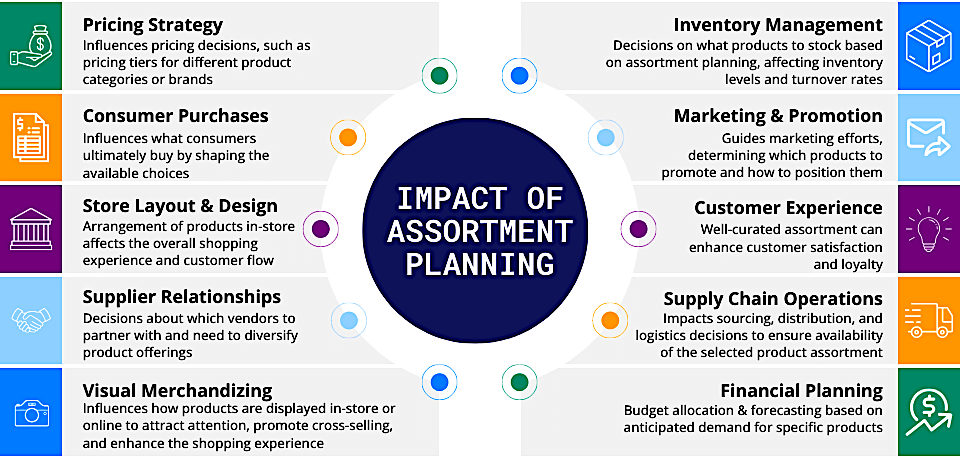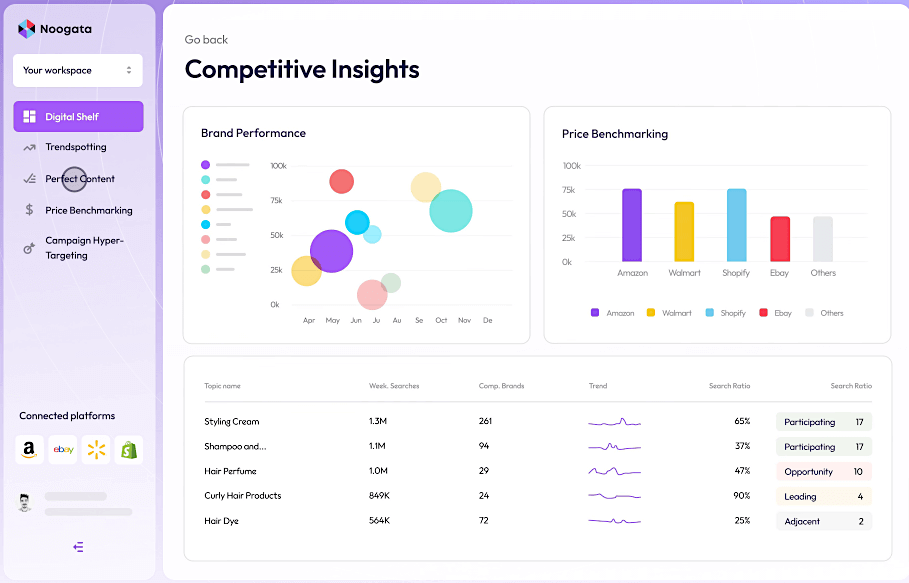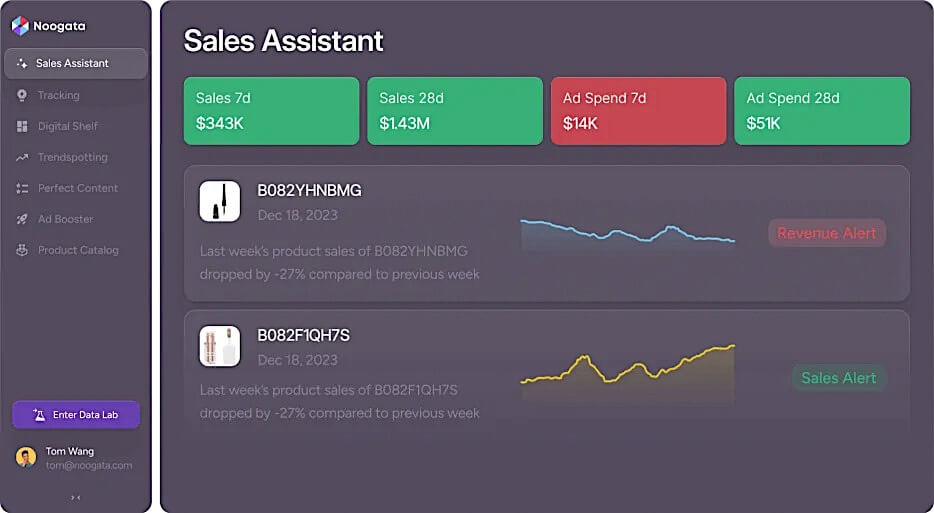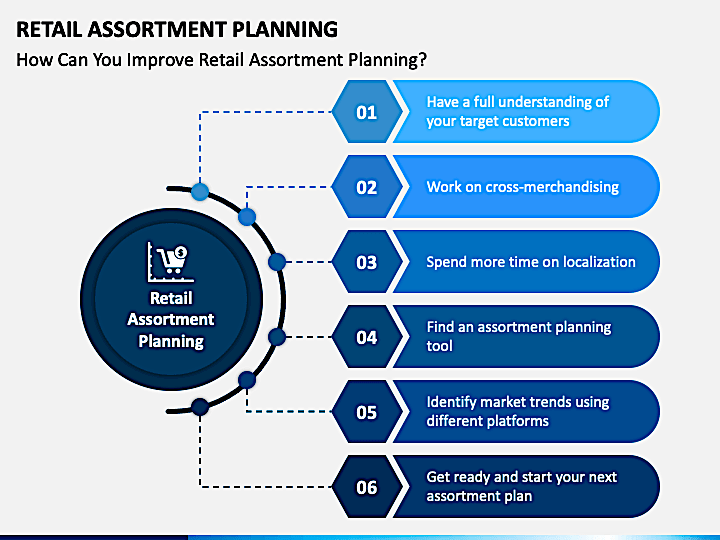Imagine running an online store overflowing with products, yet sales are flatlining. You’ve tried everything, but customers aren’t buying, leaving you with unsold inventory and dwindling profits. This common scenario underscores a critical eCommerce issue: ineffective assortment planning. When your product mix doesn’t align with customer demand, it leads to lackluster sales and high inventory costs.
A recent Google study revealed that 88% of shoppers consider product selection and variety critical when deciding which eCommerce brand or retailer to purchase from. This statistic shows the substantial impact of assortment planning on your bottom line.
In the crowded eCommerce landscape, precise assortment planning is more vital than ever. It ensures your store offers the right products at the right time, fulfilling customer needs and staying ahead of market trends. To succeed, an assortment plan must be built on eight essential principles.
What is assortment planning, and why is it important?
Assortment planning is the strategic process of selecting the right mix of products for your online store by analyzing market trends, customer preferences, and sales data. It’s the backbone of a successful eCommerce business: aligning your inventory with what your target audience wants, offering both variety and depth and meeting market demands.
Effective assortment planning keeps your store relevant and competitive by allowing you to adapt swiftly to consumer behavior and market dynamics changes. Understanding customer needs helps you tailor your product selection, making your store a preferred shopping destination.
This approach enhances customer satisfaction because shoppers are likelier to find what they want, complete purchases, and return. It also optimizes inventory management, avoids overstocking or stockouts, improves cash flow, and increases efficiency and profitability.
7 Benefits of Assortment Planning
Assortment planning offers many benefits for an eCommerce business, including:
1. Increased Sales
You can drive more sales by carefully selecting products that are aligned with market trends and customer preferences. Assortment planning ensures that your inventory includes high-demand items, boosting your overall revenue.
2. Improved Customer Satisfaction
When customers find products they want in your store, their shopping experience improves. Satisfied customers are more likely to repeat purchases and recommend your store to others, fostering customer loyalty and positive word-of-mouth.
3. Optimal Inventory Management
Effective assortment planning helps you maintain the right stock balance. It reduces overstocking and understocking risks, which can result in excess inventory costs or missed sales opportunities. This optimization leads to better cash flow and reduced storage costs.
4. Enhanced Competitiveness
Assortment planning lets you stay ahead of competitors by staying attuned to current market trends and consumer behaviors. You can offer unique or trending products that attract customers, giving you a competitive edge.
5. Better Decision-Making
A data-driven approach to product selection can help you make more informed decisions. Following the data reduces reliance on guesswork and outdated strategies, leading to more effective marketing, merchandising, and pricing tactics.
6. Increased Profit Margins
When your product mix is optimized, you can achieve higher profit margins due to increased sales, better inventory turnover, and reduced costs associated with stock issues.
7. Adaptability to Market Changes
Assortment planning allows your business to be agile and responsive to market changes. Whether it’s a shift in consumer preferences or emerging trends, you can quickly adjust your product offerings to meet new demands.
How does assortment planning work, and when should you use it?
Understanding how assortment planning works and when to apply it helps eCommerce businesses create a dynamic, responsive product strategy that meets customer needs and drives success. It’s a systematic approach involving several key steps:
Step 1: Data Collection and Analysis
The process begins with gathering data from various sources, including sales reports, market trends, customer feedback, and competitor analysis. This data is then analyzed to identify patterns and insights that inform product selection.
Step 2: Segmentation
Customers are segmented by their purchasing behavior, preferences, and demographics. Segmentation helps understand different customer needs and tailor the product assortment to meet those specific needs.
Step 3: Product Selection
Based on the insights gained from data analysis and customer segmentation, products are selected to form a balanced assortment. This selection process includes determining the right mix of core products, seasonal items, and trending products.
Step 4: Inventory Management
Effective inventory management practices ensure that the selected products are stocked in appropriate quantities. This step is critical to forecasting demand, setting reorder points, and managing stock levels to avoid overstocking or stockouts.
Step 5: Continuous Monitoring and Adjustment
Assortment planning is an ongoing process. It’s essential to regularly monitor sales performance, customer feedback, and market trends. Then, adjust as needed to keep the product mix relevant and competitive.
When to Use Assortment Planning
- Inventory Optimization – Regular assortment planning helps maintain optimal inventory levels, reduce costs associated with excess stock, and minimize stockouts.
- New Product Launches – When introducing new products, assortment planning helps decide the best mix to complement existing offerings and attract customers.
- Seasonal Changes – For seasonal products, effective planning ensures that your store is stocked with items that meet seasonal demand, boosting sales during peak times.
- Market Shifts – If you notice significant changes in market trends or consumer behavior, reassessing your assortment helps you adapt and stay competitive.
8 Essentials Every Assortment Plan Must Have
1. In-Depth Target Audience Understanding
To craft a successful assortment plan, you must first understand your target audience thoroughly. This involves analyzing:
- Demographics: What are the age, gender, income levels, and geographical locations of your customers?
- Shopping Preferences: What types of products do they prefer? Do they lean towards premium items, budget-friendly options, or a mix of both?
- Pain Points: Identifying common issues or unmet needs that your products can address.
- Online Behaviors: How do they interact with your website? What are their purchasing patterns and preferred shopping channels?
This information allows you to tailor your product assortment to meet the specific needs and desires of your audience.
2. Comprehensive Data Analysis
An effective assortment plan relies heavily on analyzing data from a variety of sources to make informed decisions. These sources include:
- Historical Sales Data: Examine past sales to identify bestsellers and underperforming products.
- Website or Store Analytics: Use platform analytics tools (such as Google Analytics or Amazon Brand Analytics) to track customer behavior, such as page views, bounce rates, and conversion rates.
- Search Trends: Utilize keyword research tools to understand what products customers are searching for.
- Competitor Analysis: Study your competitors’ product offerings, pricing strategies, and customer reviews.
- Market Insights: Leverage market research analytics and industry trends to stay ahead of the curve.
Integrating advanced, AI-powered analytics tools into your assortment planning process can increase efficiency, reduce errors, and provide a competitive edge. Noogata delivers actionable insights into market dynamics, the competitive landscape, and search trends to help you choose a product assortment that will outperform the competition.
3. Optimized Product Mix
Balancing your product assortment involves catering to both primary and niche customer segments. A robust product mix should include:
- Core Products: These are your bestsellers that generate consistent revenue.
- Seasonal Items: Products that cater to specific seasons or events, driving short-term sales spikes.
- Trending Products: Items that are currently in demand due to market trends.
- Niche Products: Specialized items that appeal to specific segments of your customer base.
Finding the ideal balance between breadth (variety of product categories) and depth (range of options within each category) ensures you meet diverse customer needs while maintaining efficient inventory levels.
4. Clear Merchandising Vision
Your assortment plan should reflect a clear merchandising vision that differentiates you within the online marketplace and aligns with your brand identity. This entails:
- Brand Alignment: Ensure that your product selection embodies your brand values and appeals to your target audience.
- Curated Shopping Experience: Create an engaging and cohesive shopping experience through well-organized categories and attractive product displays.
- Differentiation: Offer unique or exclusive products that set you apart from competitors, compelling customers to choose your store.
5. Financial Planning
Financial considerations are vital to ensure that your assortment plan is profitable and sustainable. You’ll want to carefully review:
- Profit Margins: Analyze each product’s profitability, considering costs of goods sold (COGS) and pricing strategies.
- Category-Level Profitability: Evaluate the profitability of different product categories to inform your assortment choices.
- Inventory Costs: Manage inventory levels to minimize holding costs and avoid stockouts.
Prudent financial planning helps you make data-driven decisions that optimize profitability while reducing your financial risk.
6. SEO Considerations
Effective SEO strategies are crucial for ensuring your products are easily discoverable online:
- Product Categorization: Organize your products into clear, intuitive categories that improve navigation and searchability.
- Keyword Strategy: Use relevant keywords in product titles, descriptions, and metadata to enhance your listings’ search engine visibility.
- Content Optimization: Ensure your product pages are optimized for search engines, including high-quality images, detailed descriptions, and customer reviews.
Noogata has powerful tools that support keyword research and optimization, and creating the perfect listing content. Early integration of SEO into your assortment planning helps attract more organic traffic and improves your products’ visibility.
7. Agile Supply Chain
A responsive and reliable supply chain is essential to support your assortment plan by helping you respond rapidly to fluctuations in the market or customer demands, and ensuring that you always have the right products in stock. Focus on:
- Supplier Alignment: Choose suppliers who can meet your assortment needs regarding product quality, variety, and reliability.
- Lead Times: Ensure suppliers can deliver products within acceptable lead times to maintain inventory levels.
- Flexibility: Work with suppliers who can adapt to changes in demand and support new product introductions or seasonal shifts.
8. Collaboration and Communication
Finally, proper assortment planning requires strong collaboration and communication across different departments within your organization:
- Cross-Functional Teams: Ensure that your marketing, sales, finance, and supply chain teams are all aligned and working together on the assortment plan.
- Regular Meetings: Convene regular meetings to discuss performance, address challenges, and make necessary adjustments to the plan.
- Stakeholder Involvement: Involve your key stakeholders in assortment planning to ensure their insights and feedback are considered.
This collaborative environment ensures that all aspects of the assortment plan are well-coordinated and aligned with your overall business goals.
Elevate Your Assortment Planning with Noogata
Assortment planning is a critical component of any successful eCommerce strategy. By incorporating these eight essentials into your assortment plan, you can create a dynamic, responsive product strategy that meets customer needs, enhances satisfaction, and drives business growth.
Noogata’s Assortment Intelligence tool elevates your planning with AI-driven insights. It allows you to benchmark against competitors, uncover hidden opportunities, and stay ahead of trends. With real-time data and analytics, Noogata helps you make informed decisions that boost sales, improve margins, and reduce inventory costs. The intuitive platform empowers your team to track, analyze, and optimize your product assortment efficiently.
Contact Noogata for a free demo to discover how Assortment Intelligence can transform your eCommerce business.







